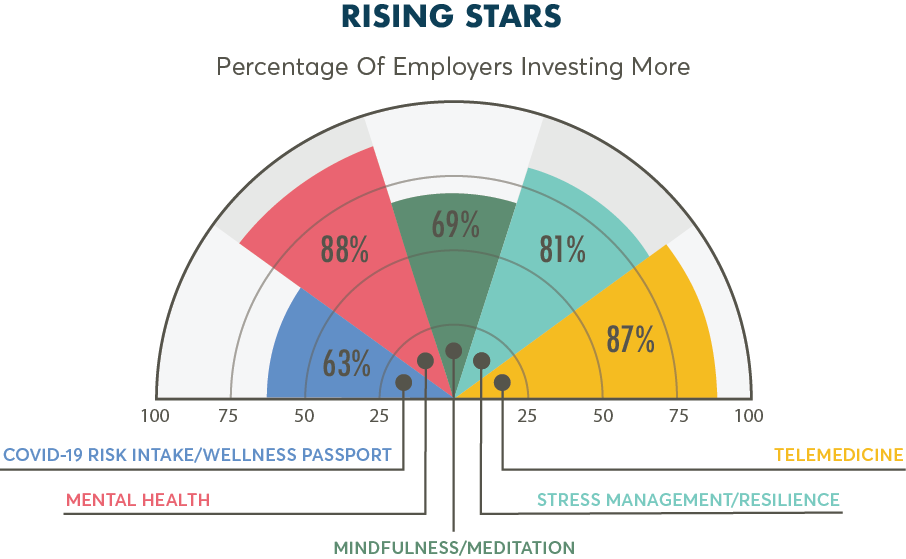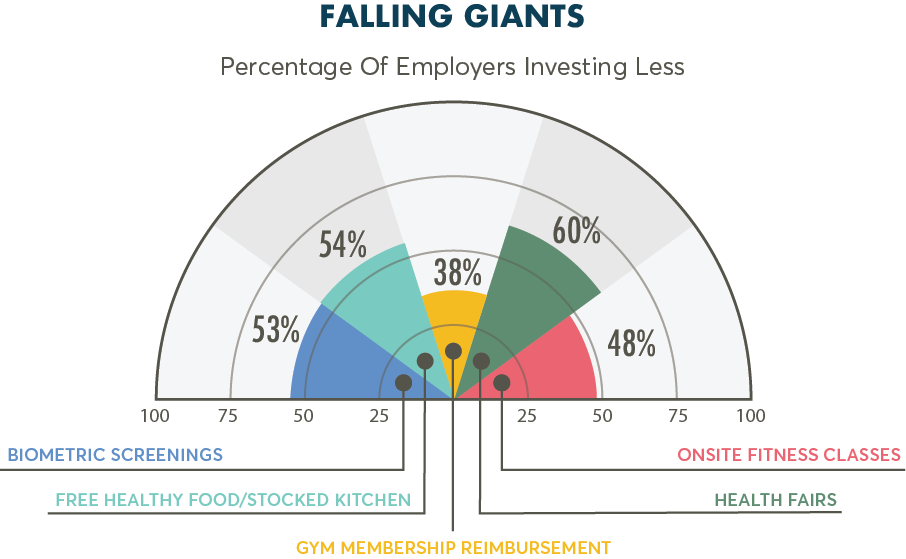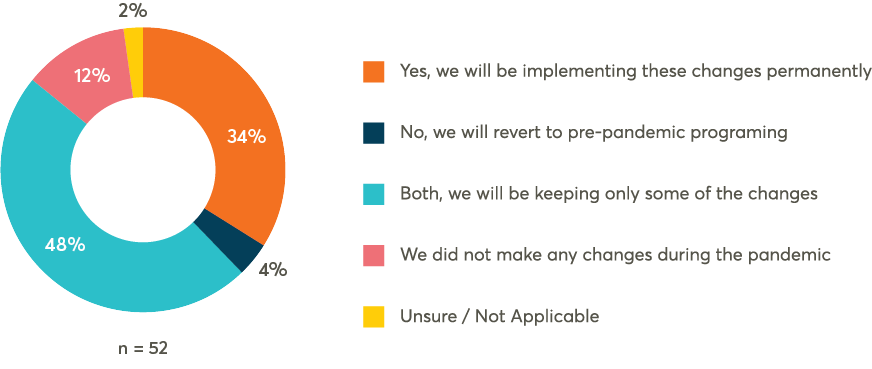The pandemic forced individuals, groups, and organizations to make significant changes to the way they carry out their lives and operations. People started wearing masks in public, practiced social distancing, and avoided any activities that involve large gatherings indoors (e.g., going to movies, concerts, or even out to eat at a restaurant). Many companies followed suit and began carrying out some or all of their functions remotely. They also made a variety of changes to their wellness programs. According to Wellable’s 2021 Employee Wellness Industry Trends Report, businesses began increasing their investments in COVID-19 passports, telemedicine, mental health, stress management, and mindfulness/meditation. Additionally, organizations started decreasing their investments in biometric screenings, free healthy food/stocked kitchens, gym membership reimbursements, on-site fitness classes, and health fairs.


As more and more individuals receive vaccinations, many remain reluctant to give up habits they acquired during the pandemic. According to a recent study conducted by the American Psychological Association, 49% of all respondents said they “feel uneasy about adjusting to in-person interactions” and 54% of Black respondents indicated that “[they] do not feel comfortable going back to living life like [they] used to before the pandemic.”
Anecdotal evidence suggests that despite the widespread reluctance to go back to the way things were, many individuals are beginning to do away with some of the protective measures they have been taking during the pandemic. Malls and restaurants are beginning to fill up. Concerts are opening to full crowds. Businesses are responding in a similar manner, with many opening up their offices to vaccinated employees while continuing to offer flexible work schedules.
With the waning and retaining of various pandemic induced trends, this month’s Pulse Check investigates if the same general story applies to the changes that businesses made to their wellness programs. Wellable asked the large, growing, and dedicated community of human resources and wellness professionals subscribed to the Wellable Newsletter if their organizations will be keeping the changes that were made to their well-being strategies during the pandemic. Of the 52 individuals that Wellable polled, 34% stated that they will be implementing all of the changes permanently and nearly half said they will be keeping some of the changes but not others. In total then, 82% of respondents stated that their organizations will continue to implement with at least some changes made to their well-being strategies.
Are the changes that were made to your organization’s well-being strategy during the pandemic permanent?

These results appear to line up with the other general trends being observed. Just like some individuals have continued with the way of living they cultivated during the pandemic, some organizations are planning on doing the same with respect to the changes that they made to their wellness programs. However, the largest percentage of respondents indicated that their companies will only be keeping some of these changes. This raises the question, which ones will they keep, and which will be reverted to the way things were before?
Some of the resources that organizations have been investing in during the pandemic were needed before it began and will continue to be useful long after it’s over. For instance, mental health and stress management resources along with telemedicine are likely to remain attractive to employees for the foreseeable future. As a result, organizations that invested additional funds in these wellness offerings are likely to continue to do.
On the other hand, as organizations open their doors, some of the wellness investments that were less worthwhile during the pandemic will again become essential when it comes to promoting employee well-being. With employees back in the office, they will be able to attend health fairs and on-site fitness classes, which go a long way towards keeping them healthy now and helping them learn how to stay well in the future. As such, companies are likely to begin reinvesting in these wellness offerings.
Takeaway
As the impetus for the changes that were made during the pandemic goes away, individuals and organizations are deciding whether they want to keep all, some, or none of these changes. When it comes to the modifications that businesses made to their wellness strategies, nearly half plan to keep some of the changes but not others.
This appears to be reflective of a more general response that individuals have to the new routines and habits they adopted during the pandemic. Some have been deemed worth keeping while others have been written off as useful only due to the unique challenges presented by COVID-19. In light of this, organizations should carefully evaluate their reasons for making the changes to their wellness programs during the pandemic. If they were made to address issues that are unlikely to go away any time soon, (e.g., mental health and financial wellness), organizations would do well to keep them. However, if the reasons for certain changes are no longer present (e.g., laws preventing certain businesses from operating at high capacities), organizations should re-evaluate whether they are worth keeping.












